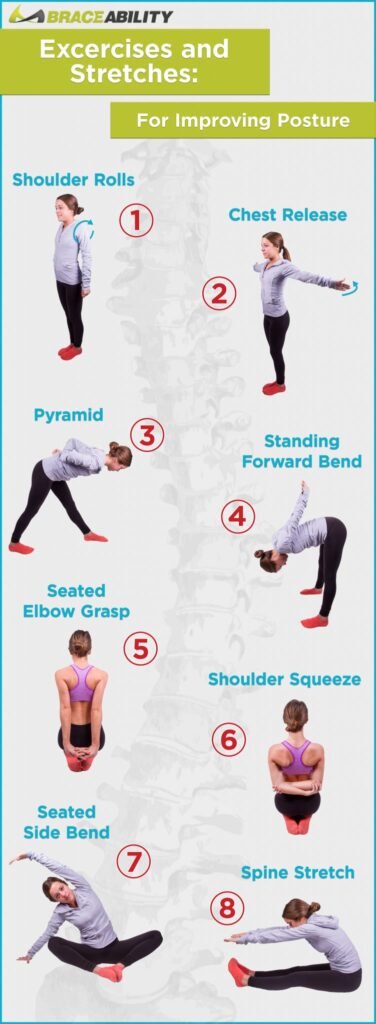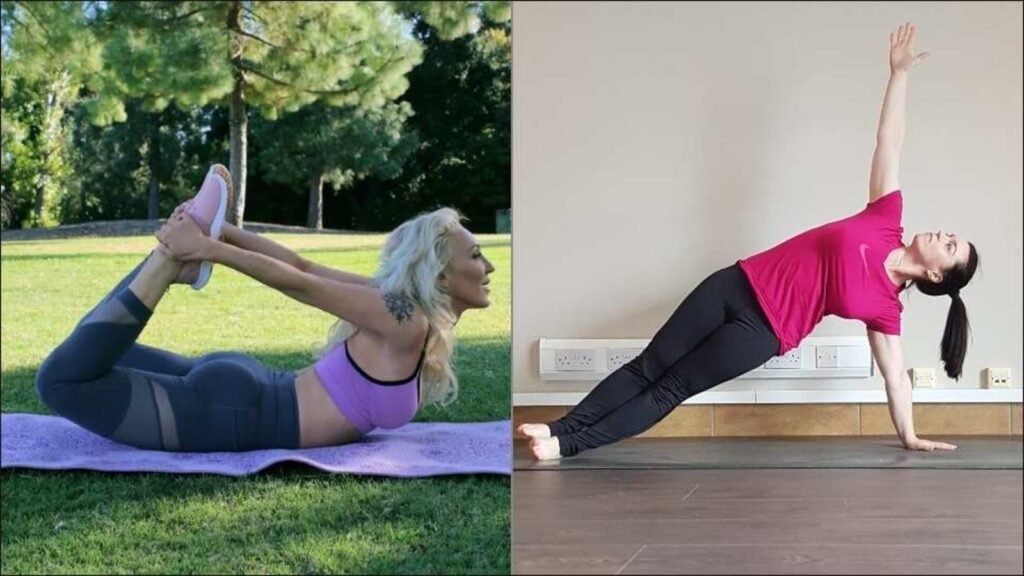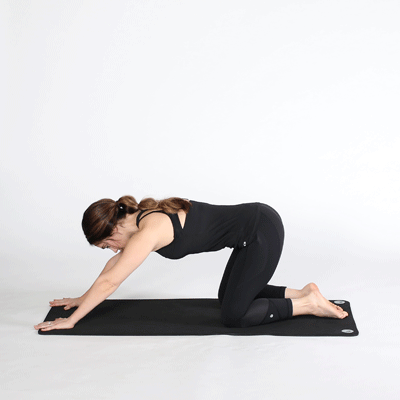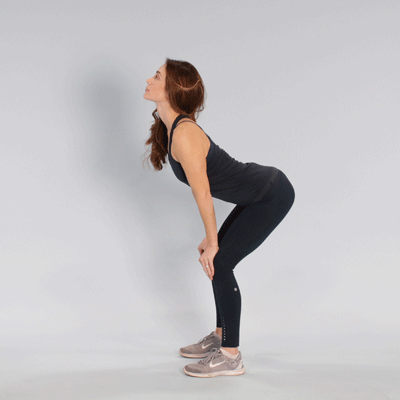Are you tired of slouching and experiencing back pain? Look no further than your own home to find the solution to your posture woes. In this article, we will explore the incredible benefits of practicing yoga in the comfort of your own living space. Discover how simple yoga poses and mindful breathing exercises can help you improve your posture, strengthen your core muscles, and find a newfound sense of balance and alignment. So roll out your mat, embrace that friendly cat pose, and let’s embark on a journey towards a healthier, more upright you.
Understanding Posture
Importance of good posture
Having good posture is essential for maintaining a healthy and balanced body. It refers to the alignment of the body’s skeletal structure, including the spine, joints, and muscles. Good posture ensures that the body is in its optimal position, allowing for proper functioning of the organs, reduced strain on muscles and ligaments, improved breathing, and enhanced overall well-being.
Common posture problems
Many people struggle with poor posture due to various factors such as sedentary lifestyle, improper sitting or standing positions, lack of muscle strength and flexibility, and stress. Common posture problems include slouching, rounded shoulders, forward head posture, and an overly arched lower back. These issues can lead to muscle imbalances, chronic pain, reduced range of motion, and even neurological problems.
Effects of poor posture
When you maintain poor posture for extended periods, it can result in a range of negative effects on your body and health. These effects can include increased muscle tension and fatigue, restricted blood flow, compressed nerves, decreased lung capacity, digestive issues, and decreased self-confidence. Over time, poor posture can contribute to chronic pain conditions, such as back pain, neck pain, and headaches.
Introduction to Yoga
Benefits of yoga for posture
Yoga is a highly effective and holistic practice that can significantly improve your posture. It helps in strengthening and stretching the muscles, creating balance in the body, improving body awareness, and promoting proper alignment. Regular yoga practice can help correct postural imbalances, alleviate the symptoms of poor posture, and ultimately transform your overall posture, leading to enhanced physical and mental well-being.
Yoga poses for posture improvement
Certain yoga poses specifically target the muscles and areas of the body that are affected by poor posture. These poses focus on stretching and strengthening the muscles responsible for maintaining proper alignment. Some of the beneficial poses for posture improvement include seated forward fold (Paschimottanasana), cobra pose (Bhujangasana), extended triangle pose (Utthita Trikonasana), and locust pose (Salabhasana). Practicing these poses regularly can help lengthen and strengthen your muscles and gradually correct postural imbalances.
Breathing techniques in yoga
In addition to the physical poses, yoga incorporates various breathing techniques, known as pranayama, that can greatly enhance your posture. Deep diaphragmatic breathing can help relax and release tension in the muscles, improve lung capacity, and promote a more balanced and upright posture. Incorporating mindful breathing exercises, such as alternate nostril breathing (Nadi Shodhana) and belly breathing, into your yoga practice can further enhance your posture and bring about a sense of calm and relaxation.

This image is property of cdn.shopify.com.
Creating a Yoga Space at Home
Choosing a quiet and comfortable area
To practice yoga at home, it is important to create a dedicated space where you can focus and immerse yourself in your practice. Choose an area in your home that is quiet, free from distractions, and allows for privacy. This could be a spare room, a corner in your living room, or even your backyard if weather permits. Ensure that the space is well-ventilated and has enough room for you to move freely.
Clearing clutter and creating a clean space
Before starting your yoga practice, it is essential to create a clean and tidy space. Clear away any clutter or unnecessary items that may distract you or hinder your movements. Having a clean and organized space will help promote a sense of calmness and tranquility, allowing you to fully focus on your yoga practice and improve your posture.
Adding yoga props for support
Consider investing in a few essential yoga props to support your practice and ensure proper alignment. Some commonly used props include yoga mats, blankets, blocks, and straps. These props can assist in maintaining proper form and alignment during yoga poses, particularly for individuals with limited flexibility or mobility. Using props can provide additional support, allowing you to deepen your practice and gradually improve your posture.
Basic Yoga Poses for Posture
Mountain pose (Tadasana)
Mountain pose is one of the foundational standing poses in yoga that promotes proper alignment and posture. Stand with your feet hip-distance apart, distribute your weight evenly on both feet, and engage your leg muscles. Lengthen your spine, lift your chest, and roll your shoulders back and down. Relax your arms by your sides and gaze forward. Mountain pose helps improve overall posture by aligning the entire body, strengthening the core, and creating a sense of grounding and stability.
Downward-Facing Dog (Adho Mukha Svanasana)
Downward-Facing Dog is a rejuvenating pose that stretches and strengthens multiple muscle groups, including the back, shoulders, hamstrings, and calves. Begin on your hands and knees, keeping your hands slightly wider than shoulder-width apart. Curl your toes under, lift your hips, and straighten your arms and legs to form an inverted V shape. Press your heels down towards the floor, lengthen your spine, and relax your head and neck. Downward-Facing Dog helps lengthen the spine, release tension in the upper back, and strengthen the muscles responsible for maintaining proper posture.
Cat-Cow stretch (Marjaryasana-Bitilasana)
The Cat-Cow stretch is a gentle and flowing movement that promotes spinal flexibility and improves posture. Start on your hands and knees, with your wrists directly under your shoulders and knees under your hips. Inhale as you arch your back, lift your chest, and gaze upward (Cow pose). Exhale as you round your spine, tuck your chin to your chest, and engage your abdominal muscles (Cat pose). Continue flowing between Cat and Cow poses while synchronizing your movements with your breath. This stretch helps release tension in the spine, improve spinal alignment, and increase body awareness.

This image is property of www.realsimple.com.
Intermediate Yoga Poses for Posture
Warrior I (Virabhadrasana I)
Warrior I is a powerful standing pose that strengthens the legs, opens the hips, and lengthens the spine, improving overall posture. Begin in a lunge position with your right foot forward and your left foot stepped back. Bend your right knee, ensuring it is directly above your ankle, and rotate your left foot slightly outwards. Raise your arms overhead, align your shoulders with your hips, and lift your chest. Gaze forward or slightly upward. Warrior I pose helps build strength in the legs and back, opens the chest, and encourages an upright and confident posture.
Reverse Triangle (Parivrtta Trikonasana)
Reverse Triangle is a twisting pose that stretches and strengthens the spine, hips, and legs, promoting improved posture. Begin in a wide-legged stance with your feet about 3 to 4 feet apart. Rotate your right foot outwards and angle your left foot slightly inwards. Extend your arms to the sides, parallel to the floor. Exhale as you reach your right hand down towards your right shin or a block, while extending your left arm up towards the ceiling. Gaze up or straight ahead. Reverse Triangle pose helps lengthen the spine, open the chest, and enhance postural alignment.
Bridge pose (Setu Bandhasana)
Bridge pose is a gentle backbend that stretches and strengthens the spine, hips, and glutes, promoting improved posture. Lie on your back with your knees bent and feet hip-distance apart. Place your arms alongside your body, palms facing down. Press your feet into the floor as you lift your hips off the mat, engaging your glutes and core muscles. Roll your shoulders back and down, creating a slight lift in the chest. Hold this pose for several breaths, focusing on lengthening the spine and maintaining an open chest. Bridge pose helps counteract the effects of prolonged sitting, release tension in the back, and improve posture.
Advanced Yoga Poses for Posture
Tree pose (Vrksasana)
Tree pose is a balancing pose that requires focus, stability, and concentration, enhancing overall posture and body awareness. Begin by standing tall with your feet together and your arms at your sides. Shift your weight onto your left foot, and bring the sole of your right foot to rest on your left inner thigh, calf, or ankle, avoiding the knee joint. Find your balance, lengthen your spine, and engage your core. Bring your hands to prayer position at the center of your chest or extend your arms overhead. Gently gaze forward or find a fixed point to focus on. Tree pose helps strengthen the legs, improve balance, and encourage an upright and centered posture.
Camel pose (Ustrasana)
Camel pose is a deep backbend that stretches and strengthens the entire front of the body, including the chest, shoulders, abdomen, and hip flexors. Kneel on the mat with your knees hip-distance apart and toes tucked. Place your hands on your lower back, fingers pointing downward. Begin to lean back, lifting your chest and arching your upper back. Keeping your hips aligned over your knees, you can gradually reach for your heels or bring your hands to rest on your lower back or hips for support. Gently drop your head back if it feels comfortable. Camel pose helps open the chest, strengthen the back muscles, and improve overall posture.
Wheel pose (Chakrasana)
Wheel pose is an advanced backbend that strengthens the entire posterior chain, including the back, glutes, and hamstrings, while also opening the chest and shoulders. Begin lying on your back with your knees bent and feet hip-distance apart. Bend your elbows and place your hands on the mat beside your head, fingers pointing towards your shoulders. Press into your hands and feet as you lift your hips off the mat, coming into a bridge position. Firmly press into your hands and feet to lift your chest, straightening your arms as much as possible. Gaze upward or towards your toes. Wheel pose helps strengthen the back muscles, open the chest, and improve spinal mobility and posture.

This image is property of images.hindustantimes.com.
Yoga Sequences for Posture Improvement
Morning energizing sequence
Start your day on a positive note by incorporating a morning energizing sequence that focuses on enhancing your posture. Begin with a few rounds of Cat-Cow stretch to warm up the spine. Move into Mountain pose to align the body and find stability. Flow into Sun Salutations to build heat and engage the entire body. Include standing poses such as Warrior I and Reverse Triangle to strengthen the legs and improve posture. Finish with a seated forward fold to stretch the back and hamstrings. This sequence will help wake up the body, improve postural awareness, and set a positive tone for the day ahead.
Evening relaxation sequence
In the evening, wind down and release tension from the body with a relaxing sequence that promotes proper alignment and postural restoration. Begin with gentle neck rolls and shoulder stretches to release tension in the upper body. Move into Child’s pose to stretch the back and hips and promote relaxation. Transition into a supine twist to release any spinal tension. Finish with a supported bridge pose using a block or bolster to gently open the chest and restorative forward fold with the support of a bolster. This sequence will help release tension from the day, restore proper alignment, and prepare the body for restful sleep.
Full-body posture sequence
For a comprehensive practice targeting the entire body and promoting optimal posture, include a full-body posture sequence in your yoga routine. Begin in Mountain pose to establish proper alignment and focus. Flow into a combination of standing poses such as Warrior I, Reverse Triangle, and Tree pose to strengthen the legs, open the hips, and promote an upright posture. Move into backbends like Bridge pose and Camel pose to stretch the front of the body and activate the back muscles. Include forward folds like Seated Forward Fold to lengthen the back and hamstrings. Conclude with a closing meditation to cultivate gratitude and mindfulness. This sequence will help correct postural imbalances, increase body awareness, and improve overall posture.
Incorporating Yoga into Daily Routine
Setting a regular practice schedule
To maximize the benefits of yoga for posture improvement, it is important to establish a regular practice schedule. Set aside dedicated time each day for your yoga practice, whether it’s in the morning, during lunch breaks, or in the evening. Consistency is key to making progress and reaping the long-term benefits of yoga. By incorporating yoga into your daily routine, you will gradually improve your posture and experience the positive effects on your physical and mental well-being.
Start with shorter sessions and gradually increase
When starting or incorporating yoga into your daily routine, it is advisable to begin with shorter sessions and gradually increase the duration as your body adapts and becomes more accustomed to the practice. Starting with 10-15 minutes of yoga each day can be a practical approach. As your body and stamina improve, you can gradually increase the duration to 30 minutes or more. This progressive approach helps prevent feelings of overwhelm and promotes a sustainable and enjoyable yoga practice for posture improvement.
Mindful posture awareness throughout the day
Beyond your dedicated yoga practice, it is important to cultivate mindful posture awareness throughout the day. Pay attention to how you sit, stand, and move your body during daily activities. Practice sitting and standing with an upright spine, engaging your core muscles, and relaxing your shoulders. Take regular breaks to stretch and move around, especially if you spend long periods sitting or working at a desk. By maintaining mindful posture awareness throughout the day, you will reinforce the positive changes made during your yoga practice and further improve your overall posture.

This image is property of i0.wp.com.
Additional Tips for Posture Improvement
Strengthening core muscles
Strong core muscles play a crucial role in maintaining good posture. Incorporate core-strengthening exercises into your yoga practice, such as Plank pose, Boat pose, and Side Plank. These poses target the abdominal muscles, back muscles, and obliques, which help support the spine and maintain proper alignment. A strong core will provide stability and prevent slouching or rounding of the back, contributing to improved posture.
Avoiding prolonged sitting or standing
Prolonged sitting or standing in one position can lead to poor posture and muscle imbalances. Make a conscious effort to alternate between sitting and standing throughout the day. Take short breaks to stand up and stretch, and ensure your work or study area is ergonomically designed to support good posture. If sitting for extended periods is unavoidable, consider using a stability ball or an ergonomic chair that promotes proper alignment and supports the natural curves of the spine.
Ergonomic adjustments in the workspace
Creating an ergonomic workspace is essential for maintaining good posture during work or study hours. Ensure that your desk or workstation is set up at the correct height to prevent unnecessary strain on your neck, shoulders, and back. Use an adjustable chair with proper lumbar support, position your computer monitor at eye level, and place your keyboard and mouse at a comfortable distance to avoid hunching or reaching forward. Making these ergonomic adjustments will significantly improve your posture and reduce the risk of developing musculoskeletal issues.
Seeking Professional Guidance
Consulting a yoga instructor or therapist
If you are new to yoga or have specific concerns about your posture, it can be helpful to seek guidance from a qualified yoga instructor or therapist. They can assess your posture, provide personalized recommendations, and guide you through a practice tailored to your needs. A knowledgeable professional will ensure that you are performing poses correctly, offer modifications based on your abilities, and provide expert guidance to help you achieve optimal posture.
Seeking medical advice if needed
For individuals with chronic pain, severe postural issues, or underlying medical conditions, it is advisable to consult with a healthcare professional, such as a physical therapist or chiropractor. They can assess your specific condition, provide a diagnosis if necessary, and offer targeted treatments and exercises to address your posture concerns. Combining medical expertise with the practice of yoga can be a comprehensive approach to posture improvement and overall well-being.
Customized posture correction programs
In some cases, individuals may require more specialized and intensive posture correction programs. These programs focus on identifying and addressing postural imbalances, muscle weaknesses, and specific movement patterns that contribute to poor posture. Customized treatment plans may include a combination of yoga exercises, targeted stretches, strength training, and manual therapy techniques. Engaging in a structured posture correction program under the supervision of a trained professional can be highly beneficial for individuals with complex or severe postural issues.
In conclusion, incorporating yoga into your daily routine can significantly improve your posture and overall well-being. By understanding the importance of good posture, addressing common posture problems, and practicing yoga poses tailored for posture improvement, you can gradually correct postural imbalances, strengthen your muscles, and enhance your body awareness. Creating a dedicated yoga space at home, incorporating basic, intermediate, and advanced poses, and following specific yoga sequences will further enhance your posture improvement journey. By establishing a regular yoga practice, incorporating mindful posture awareness throughout the day, and seeking professional guidance if needed, you will be well on your way to achieving optimal posture and enjoying the multitude of benefits that yoga brings. So roll out your mat, take a deep breath, and embark on this transformative journey to healthier, more aligned posture with the power of yoga.

This image is property of i0.wp.com.


